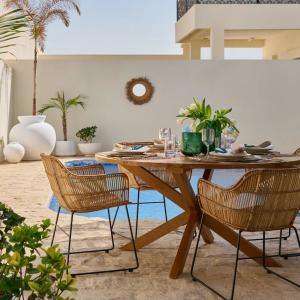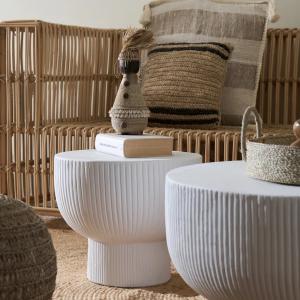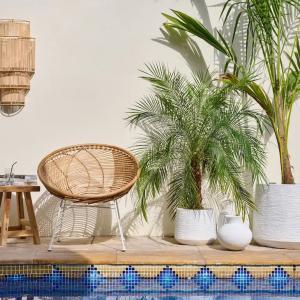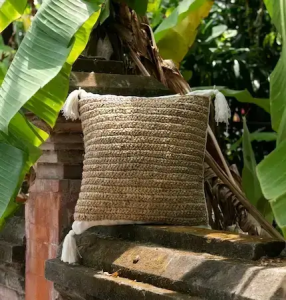Exploring Modern Ceramic Vases: Balancing Art, Scale, and Simplicity in Contemporary Interiors
Elegant Accents: Shop Luxury Vases and Ceramic Decor for Contemporary Spaces in Dubai
DUBAI, AL MANARA, UNITED ARAB EMIRATES, October 17, 2025 /EINPresswire.com/ -- In interior design, details define atmosphere and identity. A perfectly planned layout and well-chosen furniture can create balance, but it is the smaller decorative elements that turn a space into something personal. Among these details, ceramic vases hold a special role. They connect art, tradition, and functionality, acting not only as vessels but as sculptural statements that shape the rhythm of a room.Across contemporary homes—from compact city apartments to open-plan villas—vases help anchor the eye, introduce texture, and reflect the character of their owners. Whether minimalist in form or richly detailed, these pieces often become quiet focal points that speak louder than any wall color or fabric pattern.
In places known for architectural grandeur, such as Dubai, the importance of decor lies in creating balance between scale and intimacy. Decorative ceramics help soften strong architectural lines and bring a sense of warmth to large modern spaces. From small tabletop accents to big vases for living rooms, each object serves both a visual and emotional function, linking people to tradition, craft, and nature.
The Role of Ceramic Decor in Modern Interiors
A ceramic vase does far more than hold flowers. It shapes the visual narrative of a space, guiding attention and establishing a sense of proportion. Designers often use them to mark transitions—between open and enclosed areas, between light and shadow, or between minimalist and textured elements.
Ceramics are among humanity’s oldest art forms. Their tactile surfaces and handcrafted quality resonate deeply in modern interiors dominated by glass, steel, and polished stone. The quiet imperfection of clay contrasts beautifully with technological precision, reminding us of human creativity and material origins.
In living areas, big vases for living rooms can even function as architectural features. Their silhouettes define pathways, divide spaces, or create resting points for the eye. A tall vase, placed strategically, can visually raise the ceiling; a wide and low one can ground a seating area and create balance. Through proportion and placement, vases affect how people experience scale and space.
Ceramic decor also supports psychological comfort. Earthy textures and natural tones connect inhabitants with organic elements that calm the mind. This biophilic influence—subtle yet powerful—encourages relaxation and enhances the feeling of being at home.
Understanding Visual Hierarchy and Spatial Balance
In design composition, hierarchy is key. Different vase sizes and shapes organize the visual flow, directing attention naturally from one focal point to another. A collection of vases—each distinct but related—can establish rhythm, like musical notes in a melody.
Texture variation plays an equally vital role. Smooth, reflective ceramics interact with light differently than matte or rough finishes. When placed side by side, they create depth and invite touch, breaking the monotony of polished surfaces often found in modern interiors.
Another dimension is cultural. Every ceramic piece carries echoes of ancient craftsmanship—methods refined across centuries and cultures. This embedded history adds subtle intellectual richness to a contemporary setting, where design often strives to combine simplicity with meaning.
Types and Styles: From Geometry to Nature
The diversity of ceramic design today is immense, spanning traditional forms to experimental works. Yet, certain categories help clarify the design language that defines contemporary preferences.
Minimalist geometric: This style emphasizes pure lines, clear silhouettes, and balanced proportions. Shapes are reduced to essentials—cylinders, spheres, cubes—creating calm visual order. In minimalist homes, geometric vases act like punctuation marks: deliberate, quiet, and essential.
Organic sculptural: In contrast, this category embraces irregularity and the influence of nature. Inspired by stones, shells, or flowing water, such pieces look almost grown rather than made. Their asymmetry and fluid lines introduce movement and character, making them ideal for interiors that favor natural textures and soft lighting.
Classic and ornamental: Rooted in historical motifs, these vases feature traditional patterns and detailing. They pair well with transitional interiors where modern and traditional elements coexist.
Textured experimental: Artists and designers often push the limits of the material through layering, glazing, and unusual finishes. The result is bold, tactile, and visually complex—vases that demand attention as individual artworks.
Each of these categories can adapt to personal taste and architectural context. Whether one chooses the strict clarity of minimalist geometric designs or the expressive presence of organic sculptural forms, the vase becomes a dialogue between structure and emotion.
Proportion, Scale, and Placement
Selecting the right size and shape for a vase is an art of proportion. The relationship between an object and its surroundings defines harmony or imbalance. A big vase for the living room must feel grounded in the space—large enough to hold visual weight, yet never overwhelming.
In open layouts with high ceilings, tall vases (80–100 cm) create vertical anchors. They help connect floor and ceiling, uniting different visual levels. Conversely, in smaller rooms, wide low vases create stability without dominating the view.
Designers often follow the rule of thirds: the vase should occupy roughly one-third the height of the furniture it sits on. This ratio ensures pleasing visual balance. But intuition also matters—some spaces benefit from breaking the rule for dramatic effect, especially when the vase is meant to stand as an independent sculpture.
Practical guidelines for proportion include:
Measure before purchase. Knowing the height and width of the intended location prevents scale mistakes.
Visualize physically. Creating cardboard templates or mock-ups helps anticipate real-world impact.
Consider contents. For arrangements of branches or dried plants, stability and base weight are essential.
Balance with surroundings. A vase should harmonize with nearby objects, not compete with them.
Color, Texture, and Light Interaction
The sensory appeal of ceramics lies largely in surface treatment. Color and texture determine how a vase interacts with its environment—absorbing or reflecting light, blending or contrasting with its background.
Glossy glazes amplify brightness and create a sense of movement. They reflect surrounding tones, often making a vase appear lighter or more integrated into the environment. Matte surfaces, in contrast, absorb light and add depth, encouraging a softer perception.
Some artists introduce metallic or iridescent finishes, which change hue with viewing angle and illumination. These finishes lend drama and vitality, particularly in minimal spaces where one striking accent can define the mood.
Material variation is equally important:
Glossy porcelain: Refined, reflective, ideal for formal interiors.
Matte stoneware: Earthy, durable, and versatile, balancing luxury with approachability.
Textured clay: Rough and organic, suitable for wabi-sabi or rustic designs.
Patinated glazes: Add historical character and sense of depth.
The tactile nature of ceramics encourages engagement beyond sight. When light shifts across a textured surface, it reveals the maker’s touch—a reminder that even in digital times, craftsmanship retains emotional power.
Neutral Foundations and Minimalist Harmony
White and neutral ceramics remain central to modern design. They form the quiet background that allows other materials—wood, marble, or metal—to shine. Within minimal interiors, every object must justify its presence. A single white vase can command attention through purity of line rather than color.
Neutral ceramics are never truly uniform. Subtle differences between ivory, beige, and taupe create complexity without visual noise. These tones pair naturally with wooden furniture, stone floors, and soft fabrics. A large neutral vase often acts as a mediator between contrasting elements, connecting disparate textures into one cohesive story.
Texture takes on special importance in monochrome palettes. The interplay between matte and glossy areas, embossed patterns, or fine surface cracks introduces visual richness without the need for strong color contrast.
Advantages of neutral design include:
Visual openness: Light tones make interiors feel more spacious.
Timeless appeal: Neutral ceramics remain relevant despite shifting trends.
Focus on form: Simplified colors highlight craftsmanship and silhouette.
Compatibility: Such vases integrate easily into varied styles, from Scandinavian to industrial.
Bold Color and Expressive Accents
While neutrality offers calm, bold ceramics bring energy and identity. Deep blues, terracotta reds, emerald greens, or mustard yellows inject personality and warmth. A single colored vase can serve as the starting point for an entire room’s palette.
Designers often echo the color of a vase through smaller details—pillows, art, or textiles—creating cohesion. In minimalist settings, a bright ceramic object against a neutral backdrop acts as a visual exclamation mark.
Large colored vases, especially big vases for living rooms, often serve as the main decorative statement. They require no elaborate floral arrangements; their color alone becomes the focus. Metallic glazes enhance this effect by adding luminosity, turning the vase into a dynamic centerpiece that responds to changes in daylight.
Color psychology supports this approach: blue promotes calm, green symbolizes growth, red adds warmth and vitality. Choosing colors intentionally allows homeowners to influence emotional tone through subtle means.
Finding Quality Ceramic Vases
For design enthusiasts and collectors alike, sourcing ceramics has become more accessible. Boutique decor stores and online platforms offer curated selections ranging from artisanal one-offs to contemporary series.
Visiting physical stores allows tactile evaluation—feeling texture, weight, and glaze quality. In cities with vibrant design scenes, local galleries often collaborate with regional artists, providing access to unique handcrafted pieces.
When purchasing online, careful attention to product descriptions is crucial. High-quality sellers provide detailed photography, dimensions, and notes about materials and care. Reviews and ratings help assess reliability, while transparent return policies ensure peace of mind.
For fragile objects such as large ceramics, packaging quality matters as much as craftsmanship. Protective layers, secure boxing, and insured delivery prevent damage during transport. Authenticity certificates or artist documentation add further assurance for collectors.
Evaluating a source involves:
Proven reputation and customer feedback.
Clear communication and after-sales support.
Transparent pricing and return policies.
Secure and careful delivery practices.
Maintenance and Longevity
Proper care extends the life and beauty of ceramic vases. Although durable, ceramics benefit from gentle handling and regular maintenance.
Dust regularly: Use a soft cloth or brush to prevent buildup.
Avoid harsh chemicals: Mild soap or vinegar solution suffices for cleaning.
Protect surfaces: Felt pads under the base prevent scratches and chips.
Control environment: Avoid extreme temperature shifts that may cause cracks.
When using vases with fresh flowers, change water frequently and clean interiors with gentle solutions to prevent mineral buildup. For decorative purposes, seasonal rotation of arrangements—spring blooms, summer greenery, autumn branches, or winter dried stems—keeps interiors fresh and dynamic.
Styling principles such as the rule of odd numbers (grouping vases in threes or fives) and playing with varying heights create natural, balanced compositions. Sometimes, restraint makes the strongest impact: one branch in a tall vase can express elegance more effectively than a dense bouquet.
Ceramic Art as a Reflection of Modern Taste
In today’s design landscape, ceramics have regained their rightful place as collectible art. Their appeal lies in authenticity—the visible evidence of hands shaping raw earth into refined form. This authenticity aligns with the growing appreciation for craftsmanship, sustainability, and timeless design.
Each ceramic vase embodies a dialogue between permanence and fragility, between control and spontaneity. Whether minimalist geometric or organic sculptural, these pieces transcend decoration to become vessels of meaning.
In living spaces, they serve not only as ornaments but as quiet symbols of aesthetic awareness—a reminder that beauty often resides in simplicity, material honesty, and thoughtful placement.
Through conscious selection and care, even the most understated vase can transform a corner, define a mood, or capture a moment of stillness in an otherwise dynamic home.
Carol Sukkar
Home and Soul Furniture Trading LLC
+971 56 112 1444
email us here
Visit us on social media:
LinkedIn
Instagram
Facebook
X
Legal Disclaimer:
EIN Presswire provides this news content "as is" without warranty of any kind. We do not accept any responsibility or liability for the accuracy, content, images, videos, licenses, completeness, legality, or reliability of the information contained in this article. If you have any complaints or copyright issues related to this article, kindly contact the author above.




